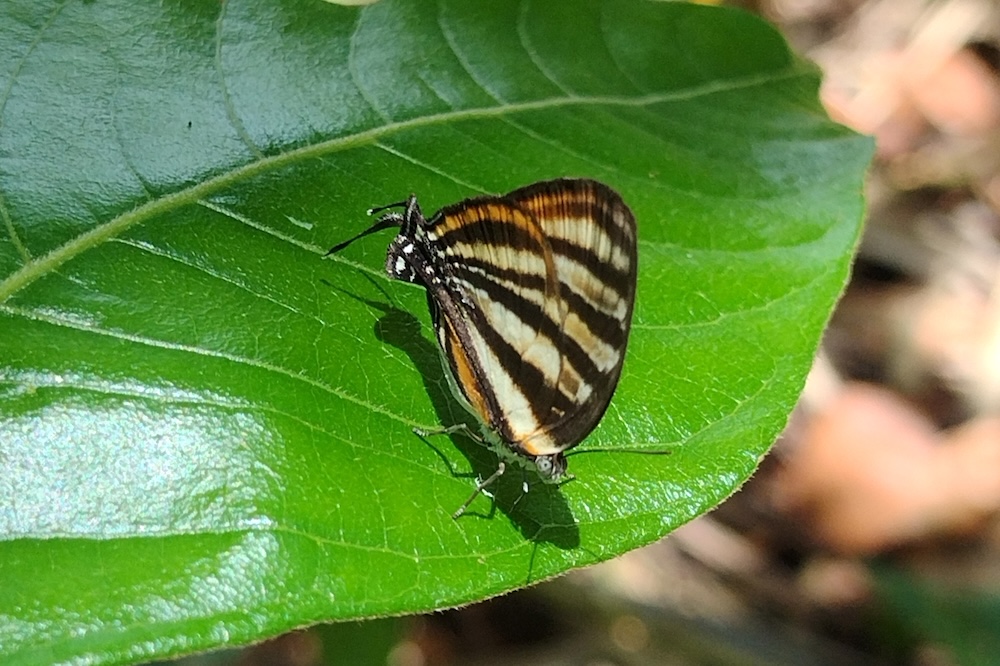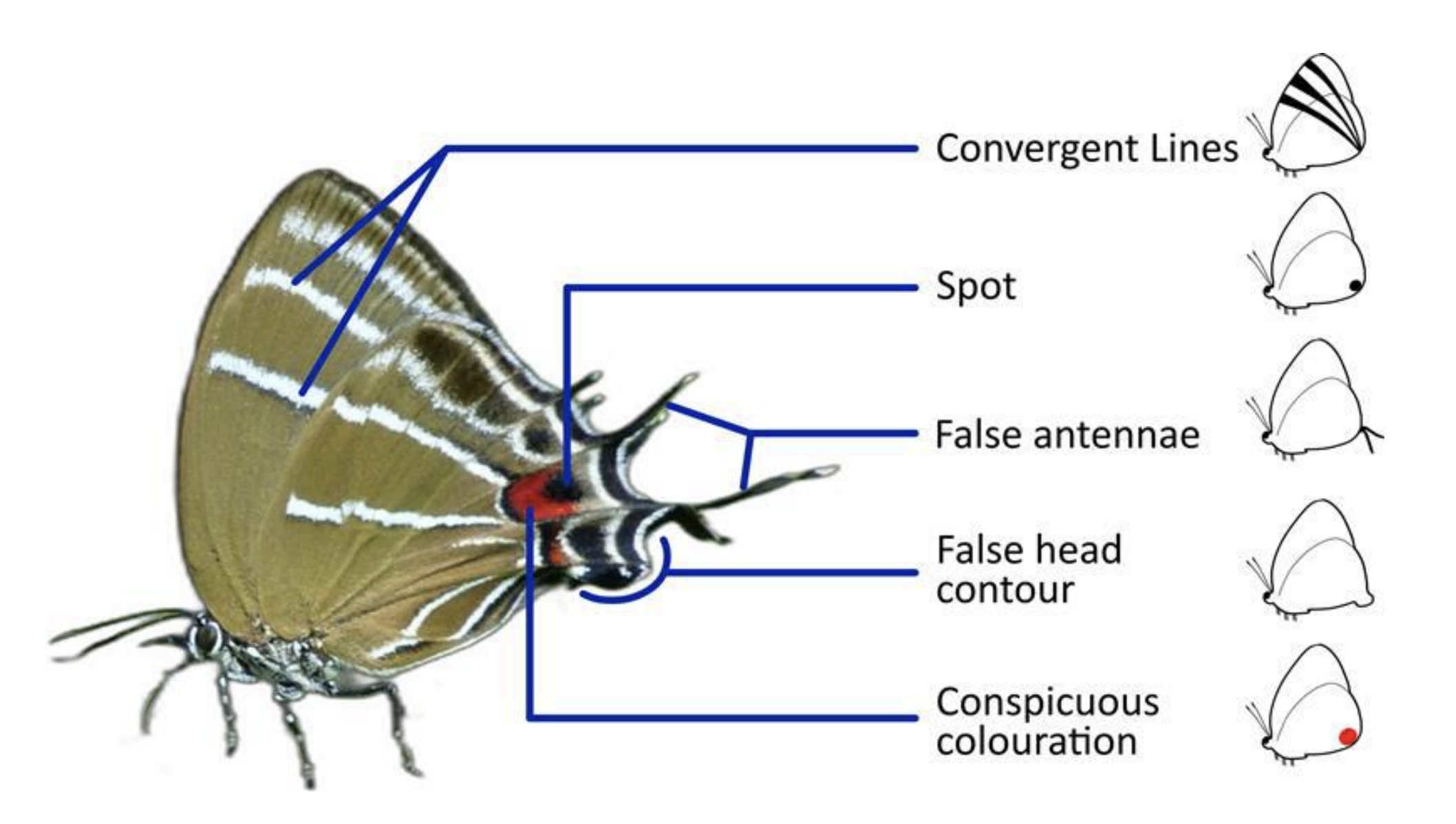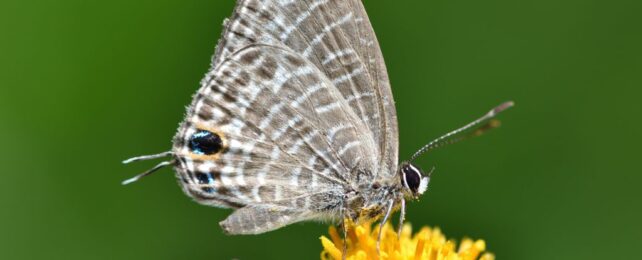Tropical lizards love to snack on butterflies, but sometimes, they have trouble telling which end is which. That's because many butterflies in the Lycaenidae family have evolved marvelously deceptive wings.
A study by two entomologists from the Indian Institute of Science Education and Research Thiruvananthapuram reveals the complex interplay of genes required to achieve such an act of subterfuge.
Butterfly wings aren't very good eating: it's the juicy, nutrient-rich body that predators are after. But the 'false heads' seen at the tail-end of more than 900 different species of lycaenid butterflies leave many a predator with a mouth full of dusty hindwing scales, and the bitter aftertaste of deception.
Related: 'Bone Collector' Caterpillar Wears Dead Bugs to Steal Prey From Spiders
Meanwhile, the butterflies can escape with just a few tears to their wings, leaving vital organs intact: ideal for passing on their life-saving genes to future generations.

Not every species takes quite the same approach: Airamanna columbia produces several 'antennae' and a cartoonish red 'eye'; Arawacus aetolus pairs realism with graphic dazzle to confound onlookers.
Entomologists Tarunkishwor Yumnam and Ullasa Kodandaramaiah used online image databases and the known family trees of 928 butterfly species to determine how false head traits evolved, including false antennae, hindwing spot, conspicuous color, false head contour, and convergent lines.

They found that all these traits except convergent lines had evolved in close correlation, suggesting that their combined effects have been working in tandem for many generations, becoming more elaborate over time.
"We found that most false head traits in butterflies evolved in a correlated pattern, presumably towards a functional association as a response to a common selective force," Yumnam and Kodandaramaiah write.
"Thus, our study provides macroevolutionary support for the idea that the false head evolved as an adaptive constellation of anti-predatory traits."
The research was published in Proceedings of the Royal Society B.
